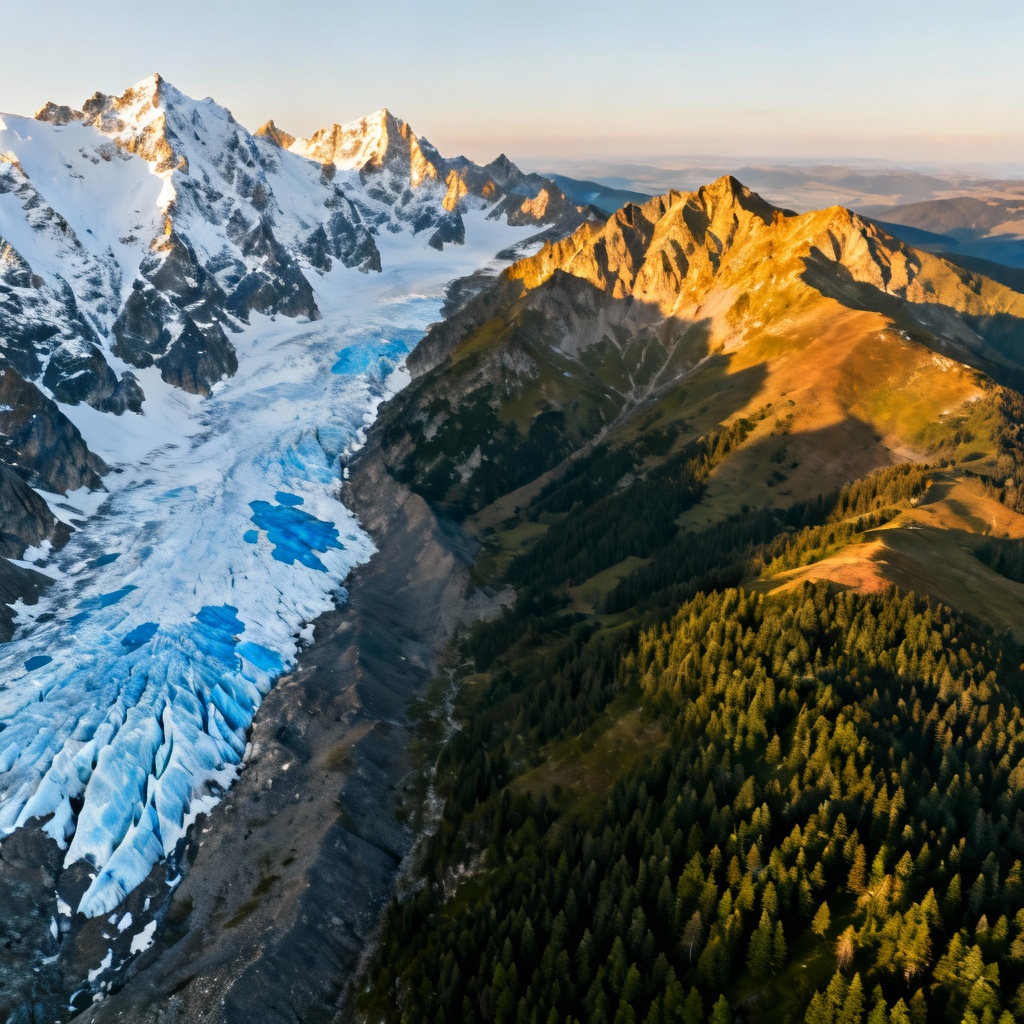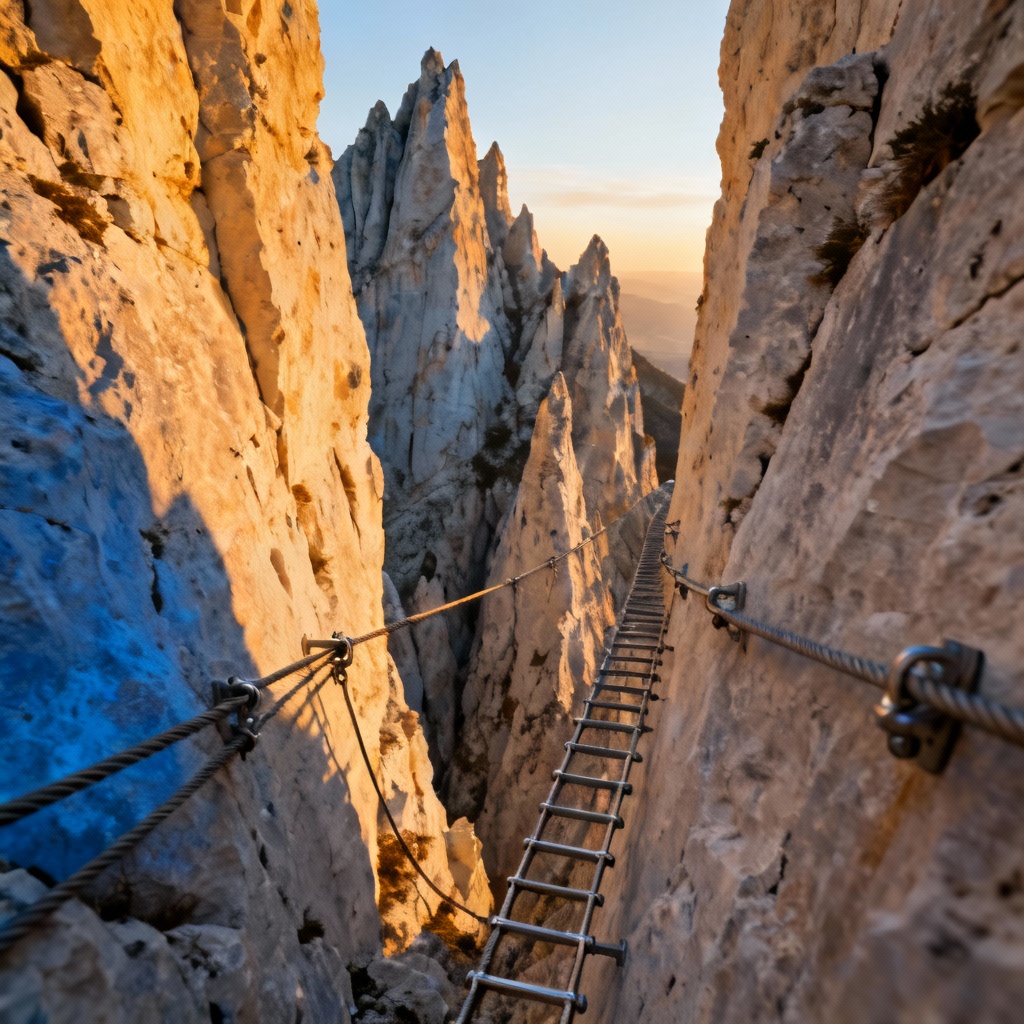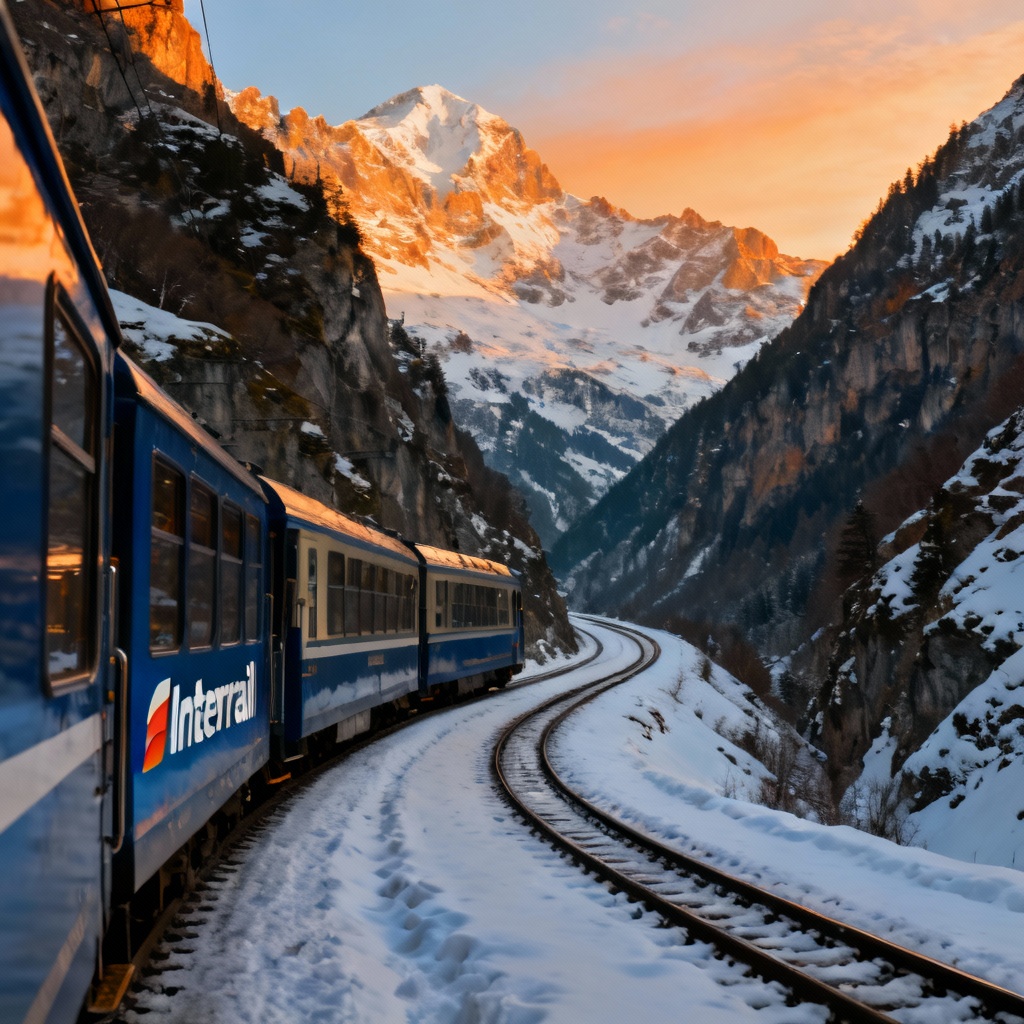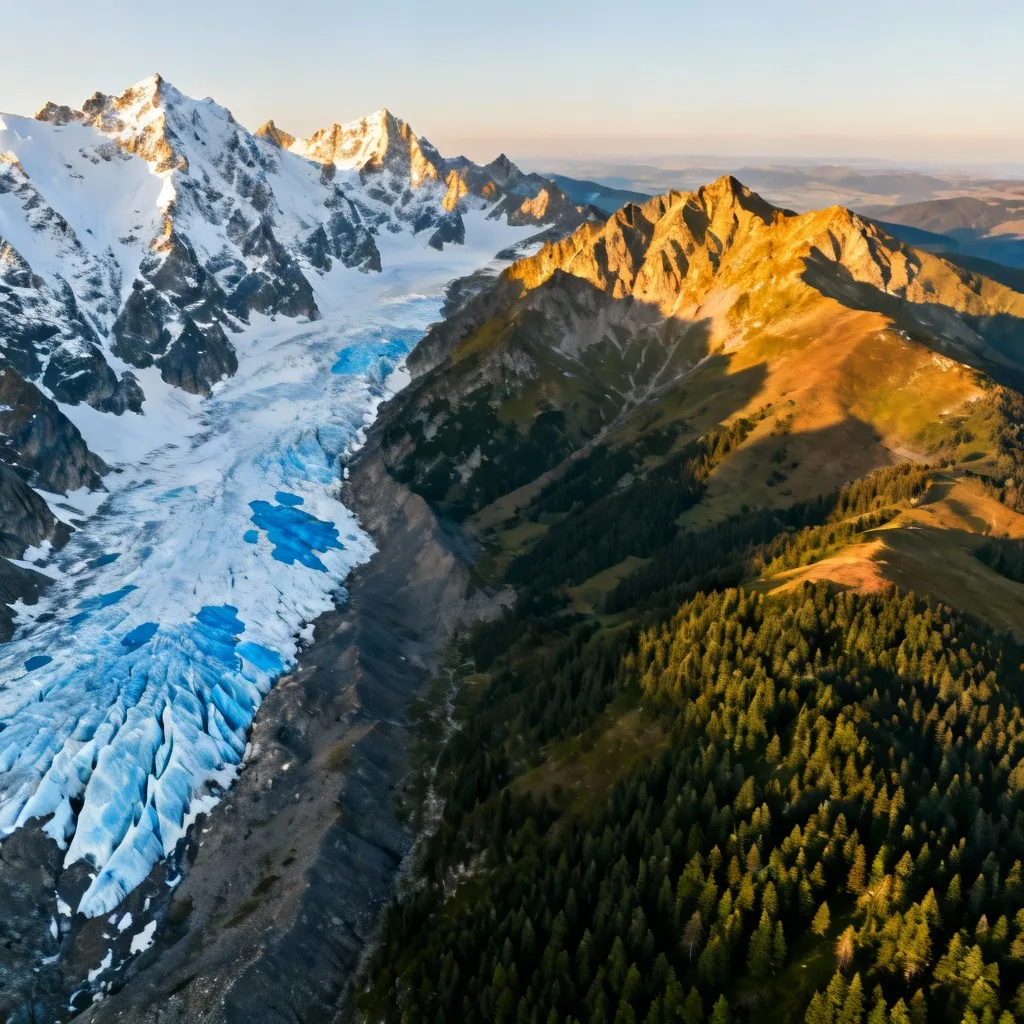Alpine Majesty and Czech Peaks: The Ultimate Guide to Hiking and Skiing in Central Europe
Central Europe presents a dazzling dichotomy for adventure seekers: the world-renowned, breathtaking scale of the Alps contrasts sharply with the wild, intimate charm of the Czech peaks. This region, often synonymous with historic capitals and rolling landscapes, harbors a mountain-lover's paradise. Whether you seek the deep powder and vertical challenge of the high Alps or the tranquil forest treks and affordable, family-friendly ski slopes of the East, Central Europe delivers an unparalleled adventure travel experience. The sheer variety in geology, culture, and climate offers a lifetime of Alps hiking and skiing alongside hidden-gem exploration in a compact geographical area.
Gateway to Glacier Peaks and Rolling Hills
Why Central Europe? The Lure of the Alps and the Charm of the East
Central Europe stands as the true heart of mountain culture on the continent, encompassing an array of majestic ranges from the glacier-crowned summits of the Mont Blanc Massif to the ancient, dense forests of the Bohemian borderlands. Travelers are drawn here for a single region that combines unparalleled natural beauty with historic trails forged centuries ago. Beyond the classic image of Alps hiking and skiing, this is a land of seamless transitions—where you can spend a summer trekking in Slovenia's Julian Alps before moving east to enjoy the cultural richness and accessibility of the Czech mountain resorts.
A Tale of Two Mountain Worlds: Defining the Alpine vs. Czech Mountain Experience
The Western and Eastern European mountains offer distinct but equally rewarding experiences. The Western Alps (Austria, Switzerland, France) epitomize 'Majesty,' boasting challenging high-alpine terrain, vast interconnected ski domains, and premium infrastructure. The trekking here is often high-altitude, multi-day, hut-to-hut journeys requiring significant preparation and fitness. In contrast, ranges like the Czech Krkonoše and Šumava, while less than 2,000 meters, offer deeply wooded, rolling mountains perfect for extensive cross-country skiing, well-marked moderate day hikes, and Central Europe adventure travel that is both budget-friendly and accessible. The sheer scale may differ, but the beauty and cultural immersion are equally profound.

The Iconic Titans: Best Hiking and Skiing in the Western Alps
The Western Alps are the undisputed spiritual home of global mountaineering and Alps hiking and skiing, providing terrain that tests even the most experienced adventurer. This is where tradition and state-of-the-art ski infrastructure meet jaw-dropping scenery.
The Legendary Slopes of Austria (St. Anton, Kitzbühel): Powder and Tradition
Austria’s ski scene masterfully blends high-energy Après-ski with deep snow conditions and ancient alpine culture. St. Anton in the Arlberg region is world-renowned, celebrated for being one of the globe’s premier resorts offering extensive terrain—over 300km of groomed pistes and a vast 200km of designated off-piste trails. It is a haven for advanced freeriders seeking deep powder, with its terrain peaking at thrilling off-piste challenges like the Valluga North Face (which necessitates a local guide). Kitzbühel offers a classic alternative, steeped in racing history as the annual host of the legendary Hahnenkamm downhill race, making it another essential stop on any tour of the best ski resorts Alps.
Swiss Majesty: Skiing Zermatt and Trekking the Eiger Trail
Switzerland delivers a polished, dramatic mountain experience centered on the continent's most recognizable peaks. Zermatt, dominated by the iconic Matterhorn, provides one of the most picturesque skiing experiences possible. Its Matterhorn Ski Paradise links over 360km of pistes between Switzerland and Italy's Cervinia-Valtournenche, with runs reaching up to a snow-sure 3,900 meters. For summer travelers, high-alpine hiking routes offer a challenge. Trekkers can embark on iconic routes like the demanding multi-week Alpine Passes Trail or the classic Via Alpina (also known as the Alpine Pass Route), which traverses the heart of the Bernese Oberland past the faces of the Eiger, Mönch, and Jungfrau mountains. The most famed summer hike linking this area to France is the renowned Walker’s Haute Route (Chamonix to Zermatt).
Chamonix & Mont Blanc: The Freeride Heart and Mountaineering Mecca
France’s Chamonix-Mont Blanc Valley is widely recognized as the birthplace of modern mountaineering and the heart of global freeriding. The accessibility via high-speed lifts makes extreme high-mountain terrain surprisingly reachable. This area has hosted the Freeride World Tour, and offers legendary, unpatrolled descents off the Aiguilles du Midi lift. The most famous high-alpine run is the Vallée Blanche, a 20km off-piste glacier route that is a spectacular highlight but is not a groomed ski slope and absolutely requires a guide and glacial equipment.
Beyond the Beaten Path: Discovering the Eastern and Southern Alpine Experiences
While the Western Alps capture the spotlight, the Eastern and Southern reaches provide equally magnificent mountains with unique flavors, appealing perfectly to those seeking quieter trails and a distinctly European charm.
Triglav National Park (Slovenia): A Hiker's Paradise in the Julian Alps
The Julian Alps in Slovenia offer stunning beauty in a small, accessible package, largely protected within Triglav National Park. This is truly a Slovenia adventure travel hotspot where jagged, white-rock peaks meet lush, pristine valleys. High-alpine trails feature hut-to-hut hiking to peaks like Mt. Triglav, Slovenia’s highest point. Beyond trekking the famous Seven Triglav Lakes Valley, the Soca Valley provides a contrast of emerald green water perfect for river-based sports like rafting, kayaking, and canyoning, ensuring activities are not limited to just one season.
Bavarian Alps: Garmisch-Partenkirchen for All Seasons Adventure
Germany’s section of the Alps, centered around Garmisch-Partenkirchen, offers superb and convenient adventure year-round. It uniquely hosts Germany's two most diverse mountain resorts: the Garmisch-Classic area and the higher, glacier-covered Zugspitze. The Zugspitze’s elevation, between 2,000 and 2,720 meters, offers reliable glacier skiing and expansive, high-altitude views. Hiking options range from family-friendly trails around the scenic Eibsee Lake to challenging gorge hikes like the Partnach Gorge (open all year) and the beautiful but seasonal Höllentalklamm.

Dolomites (Italy): Distinctive Peaks and Via Ferrata Challenges
The Italian Dolomites (a UNESCO World Heritage site) feature a dramatic landscape of uniquely pale, steep, distinctive peaks. While famous for extensive skiing, this region’s true calling card for summer thrill-seekers is the network of via ferrata routes. Meaning "iron path," these are protected climbing routes that utilize permanently fixed cables, ladders, and rungs to make steep terrain accessible to non-climbers. Routes vary from accessible tracks to very demanding climbs like the Via Ferrata Tomaselli or those found on the towering Marmolada-Punta Penia, with many passing historical World War I fortifications and tunnels. Essential gear—a helmet, harness, and certified via ferrata set—is mandatory.
The Czech Crown Jewels: Adventure in Krkonoše and Surrounding Ranges
The Czech mountain ranges may not have the towering scale of the Alps, but they offer exceptional affordability, accessibility, and dense, mystical forest beauty. These areas are quickly gaining traction as primary European adventure destinations.
Krkonoše (Giant Mountains): Czech Republic’s Premier Destination (Špindlerův Mlýn)
The Krkonoše mountains (Giant Mountains) form the highest range in the Czech Republic. They are protected as a national park and known for their distinct post-glacial landscape featuring vast boulder fields, steep corries (kettle holes), and extensive waterfalls. Špindlerův Mlýn is the Czech Republic's most famous and well-developed mountain resort, often compared to an Eastern European Chamonix for its popularity and array of facilities, including extensive hiking and cycling trails, an aquapark, and a bobsleigh track. During the winter, it offers diverse downhill and over 90km of groomed cross-country ski trails, with specific zones, like Horní Mísečky, tailored for family skiing and learning.
Hiking the Sněžka Peak: A Central European Landmark
The highest peak in the Krkonoše range is Sněžka (1,603m), an iconic Central European landmark forming the natural border between the Czech Republic and Poland. It is a surprisingly simple yet memorable objective. The most scenic and popular route is the ascent from Pec pod Sněžkou via the Obří důl (Giant Mine), a spectacular post-glacial valley that climbs steadily past historic mountain huts. An alternate option from Špindlerův Mlýn is the red-marked route that passes Luční Bouda, home to the highest brewery in the Czech Republic. Though challenging due to length (around 13km from Pec, or more from Špindlerův Mlýn), the summit is equipped with a contemporary Czech post office and offers panoramic 360-degree views across both countries.
Hidden Beauty: The Šumava (Bohemian Forest) National Park
Further south, near the German and Austrian borders, lies Šumava National Park (the Bohemian Forest), often dubbed the "green roof of Europe" as the largest continuous forest expanse in Central Europe. The scenery here is less jagged rock and more primeval forest—it is a landscape of glacial lakes, deep peat bogs (slať), and undisturbed woods like the Boubínský prales. Hiking and cycling trails abound, often connecting charming villages and historic routes like the Via Czechia. For trekkers tackling multi-day hikes, the National Park conveniently provides designated emergency overnight camping sites every 15km along the main trail.
Practical Czech Skiing: Affordability and Family-Focused Resorts
A major draw of the Czech Republic and neighboring eastern mountains is their value compared to the luxury markets of Skiing Austria Switzerland. While Alpine resorts can charge €60-€80 for a full-day ski pass, Czech resorts offer passes that are significantly cheaper, often averaging between €30-€40 per day. Moreover, resorts like Lipno and Plešivec are specifically structured around a family-focused atmosphere, featuring state-of-the-art children's zones and highly developed terrain parks, making them the top choice for beginners and budget-conscious groups on a Central Europe cheap skiing trip. Ongoing investment in technical snowmaking ensures these lower-altitude resorts offer reliable conditions throughout the season.

Mastering Your Alpine-Czech Itinerary: A Practical Guide
A trip that attempts to link the soaring majesty of the Alps with the wooded valleys of the Czech peaks requires strategic planning for maximizing enjoyment and ensuring safety.
When to Go: Seasons for Powder vs. Trekking (Optimal Months)
- Skiing/Powder Season (The Alps & Czech Republic): The prime season generally runs from mid-December through March, with higher altitude, glacier resorts like Zermatt extending through late April or even May. January and February are the most snow-sure months for deep powder.
- High-Alpine Hiking/Trekking Season (The Alps): The majority of high passes and multi-day treks (like the Via Alpina) are accessible only between mid-June and late September. The shoulder season of late June and the quieter month of September offer fewer crowds and lovely, cooler temperatures. Outside of this window, lingering snow requires specialist equipment and avalanche risk assessment.
- Low-Mountain Hiking/Forest Treks (Czech Peaks): Excellent from May to October, with lush spring flora and vibrant autumn colors offering particularly appealing times to explore the dense trails of Šumava and Krkonoše.
Essential Gear and Safety Protocols for High Altitude and Remote Trails
Preparation is the difference between a memorable trip and a dangerous one. Especially in the Alps, mountaineering principles should apply to even high-altitude hiking.
Essential Gear:
- Layered Clothing: Essential for rapidly changing mountain weather. Always include a wicking base layer, a warm fleece/down mid-layer, and a waterproof, windproof outer-shell jacket.
- Footwear: Sturdy, waterproof hiking boots with excellent ankle support are a must for the Alps' rocky terrain and long descents to prevent sprains.
- Navigation: A physical map and compass are crucial backups to GPS devices and phones. Download offline maps and have a charged power bank, especially for multi-day treks like those in Šumava or the Julian Alps, where power may be limited to huts.
- High-Altitude & Sun Protection: Strong sunscreen (SPF 50+), a wide-brimmed hat, and quality sunglasses are vital, as the sun’s rays are more intense at high elevations.
- Specific Kits: For any via ferrata route (Dolomites), you must have a certified set, helmet, and gloves. For winter backcountry or unpatrolled areas (St. Anton, Chamonix), essential avalanche safety gear (transceiver, shovel, probe) and appropriate training/a guide are mandatory.
Safety Protocols:
- Share Your Plan: Before any remote or high-altitude hike, clearly inform someone (hostel, hut keeper, friend) of your precise itinerary, intended turn-back time, and estimated return time.
- Check the Forecast: Alpine weather changes abruptly; severe weather and thunderstorms often build up by midday, necessitating an early morning start to cross exposed terrain.
- Acclimatize Gradually: When venturing above 2,500m (e.g., Zugspitze, high Swiss passes), plan to spend a day or two at a moderate altitude to help your body adjust to the decreased oxygen, thus mitigating the risk of altitude sickness.
- Know When to Turn Back: Ego is the greatest hazard. If conditions suddenly deteriorate, you feel ill, or a trail is more difficult than expected, retreat.
Navigating Transport and Multi-Country Logistics (Rail, Passes, Car Hire)
To seamlessly connect the Alpine countries (Austria/Switzerland/Slovenia/Germany) with the Czech Republic, long-distance rail travel is highly recommended. The network is efficient and allows you to enjoy the scenery without the stress of driving mountain passes.
The Eurail Global Pass or Interrail Global Pass (for European residents) are the ideal ticket for a multi-country itinerary, granting flexibility across 33 countries including all the destinations in the article. However, be aware that you will need to pay for and book seat reservations on many high-speed, popular, and international routes (like a potential Prague-Vienna-Innsbruck connection) well in advance. Alternatively, booking point-to-point tickets months ahead can also yield good savings. Car hire is most useful within a single mountain area (e.g., Bavaria) but unnecessary and often expensive across borders or between major centers.
Lace Up Your Boots, Click Into Your Skis: Your Next Adventure Awaits
A Synthesis of Snow and Scenery: Uniting the Two Experiences
The dual adventure of Alpine hiking and skiing offers a holistic appreciation for Central Europe’s topography. The regions covered—from the freeride challenges of St. Anton to the peaceful, well-signed Bohemian Forest trails in Šumava National Park—ensure that every season presents a compelling reason to visit. It’s an ideal travel strategy to pair a budget-friendly winter ski week in one of the well-equipped Czech mountain resorts with a grand summer trek along a Swiss Alpine pass treks like the Via Alpina for the full, comprehensive Central European mountain experience.
Final Inspirational Call to Explore Central Europe's Majestic Ranges
The majestic high peaks demand your fitness and focus, while the welcoming Eastern slopes deliver authentic charm and outstanding value. From mastering the iron paths of the Dolomites to gazing across the green vastness from Sněžka Peak, this adventure corridor offers limitless opportunities for those willing to look beyond the well-trodden tourist path. Your journey to Central Europe adventure travel will not only provide physical challenge but an unforgettable connection to the rugged, rich culture that is intrinsically tied to these grand mountains.
